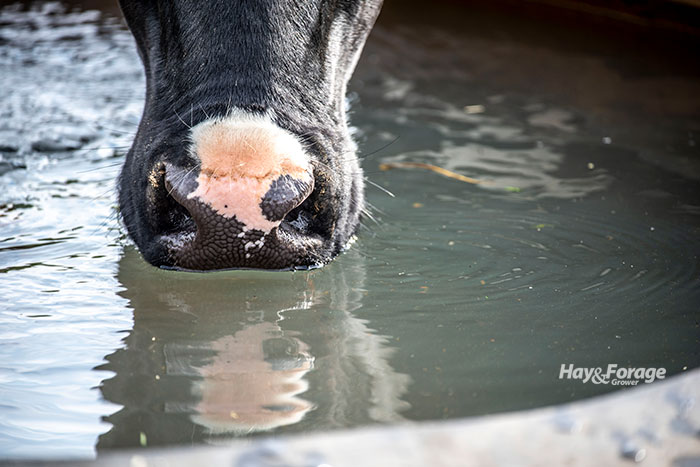Nitrates may come from more than just forage |
| By Mike Rankin, Managing Editor |
|
|
 Pasture forage that is high in nitrate levels is always a concern and something that bears monitoring. Heavily fertilized species such as millet, oats, corn, sorghum, sudangrass, kochia, and others are ones that can accumulate elevated nitrate (NO3) levels, especially during a drought. “Nitrate is not especially toxic; however, in ruminants and herbivores, the bacteria in the digestive tract convert nitrate to nitrite, which is readily absorbed and 10 times more toxic than nitrate,” explains Adele Harty, a cow-calf field specialist with South Dakota State University. Although forages get most of the high-nitrate attention, Harty suggests that water sources must be considered as well. “Nitrate poisoning can be a concern due to runoff making its way into stock dams from nitrogen-fertilized fields, Harty asserts. “Nitrate is soluble and will be picked up and flow with runoff into a pond or into the recharge area for a spring or well.” Nitrate runoff problems are more of a problem in wet years, but it can be an issue in any year. Nitrate toxicity in water will be the same as for high-nitrate forages. “When determining nitrate levels in the diet, it is important to consider the level in the water as well as that of the forage,” Harty notes. The specialist explains that nitrate levels are commonly provided in lab reports in one of two ways, either as levels of NO3-N or NO3. She offers the following guidelines to assess the risk level for livestock water and/or forage consumption. Levels of nitrate-N (NO3-N) in water and the risk levels: 0 to 100 part per million (ppm): Safe 100 to 300 ppm: Use caution, and consider the additive effect with feed Greater than 300 ppm: Potentially toxic Levels of nitrate (NO3) in water and the risk levels: 0 to 440 ppm: Safe 440 to 1,300 ppm: Use caution and consider the additive feed effect Greater than 1,300 ppm: Potentially toxic Levels of nitrate-N (NO3-N) in forage and the risk levels: 0% to 0.15%: Safe 0.15% to 0.45%: Use caution; may need to dilute or limit feed forages Greater than 0.45%: Potentially toxic Levels of nitrate (NO3) in forage and the risk levels: 0% to 0.65%: Safe 0.65% to 2%: Use caution; may need to dilute or limit feed forages Greater than 2%: Potentially toxic If there is reason to believe that high-nitrate water or forage might be an issue, Harty suggests having them tested at a reputable laboratory.
|
